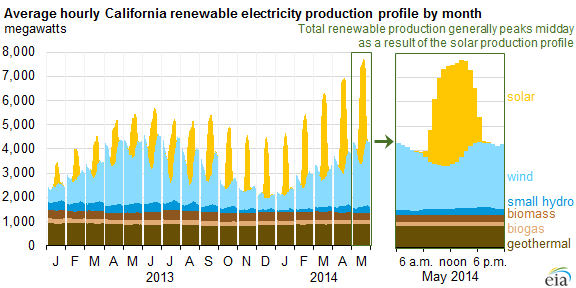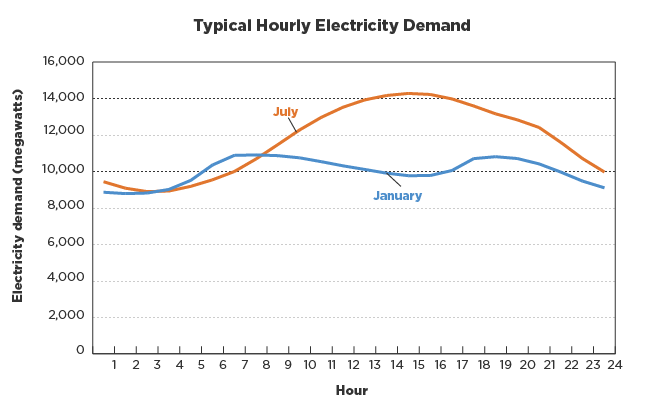Last month, New York passed the Climate Leadership and Community Protection Act, which calls for a carbon free electricity market by 2040. With passage of this law, New York became the sixth state to pass legislation calling for a carbon free electricity market. Just one year earlier, California passed similar legislation, SB100, adopting a state policy to achieve a zero-carbon electricity market by 2045.
These goals will have to be pursued notwithstanding the fact demand for electricity is projected to increase as other sectors pursue beneficial electrification to comply with ambitious emission reduction goals they face. Whether these goals can be achieved, and at what cost, will depend on technology advancements and how these laws are interpreted and implemented by regulators.
New York's Climate Leadership and Community Protection Act requires 70% of electricity consumed in New York be generated by renewable resources by 2030 and the state must be carbon free by 2040. California's SB100 requires 60% of electricity come from renewable resources by 2030 and adopts a state policy of a 100% zero carbon electricity by 2045.
The New York legislation explicitly conditions meeting these extraordinarily ambitious renewable energy mandates on maintaining reliability and affordability. This leads to obvious questions: Can a zero-carbon electricity market be achieved in a manner that maintains reliability and affordability, and if so, how? What flexibility exists under these laws to ensure these emission reduction goals can be achieved even if new technologies or significant price declines fail to materialize?
Historically, grid operators were able to match electricity supply with electricity demand by ramping up production as demand increased and reducing production as demand decreased. However, unlike traditional fossil-fired generation, renewable generation produces electricity when the source for their generation, like the sun or the wind, is available.
The problem is that this does not occur at the same time that consumers use energy. The problems created by this mismatch are depicted on a 24 hour and annual basis in the following charts.


The first chart depicts hourly and seasonal renewable energy production in California, where solar generation production already exceeds demand many hours in the year (particularly on cool, sunny days in the spring when solar production is high but air conditioning electricity demand is low). The second chart shows how electricity demand varies by hour and by season for a utility that delivers electricity to all customer types in a warm climate.
Note that peak demand changes by season, occurring around 2 p.m. in the summer, but around 7 a.m. and 6 p.m. in the winter. Solar production, on the other hand, peaks at about 12 p.m. In addition, as noted above, renewable energy production is very high in the spring when air conditioning-driven electricity demand is relatively low.
These kinds of hourly and seasonal mismatches between supply and demand must be addressed with energy storage, dispatchable energy production and/or dynamic demand response. Absent significant technology improvements or cost reductions, the ways in which these zero carbon targets are implemented could have a material impact on affordability or reliability.
A recent Wood Mackenzie report estimates that transitioning the US power grid to 100% renewable energy with existing technologies would cost $4.5 trillion, or $35,000 per household. The report estimates that about 1,600 GW of new Wind and Solar capacity would be required to replace all fossil fuel generation in the US (A 100% renewable energy market would require significantly more renewable generation capacity than the approximately 1.060 GW of nameplate capacity that currently exists. There needs to be adequate overall electricity production to meet demand during seasons of the year when there are fewer available renewable resources. Renewable resources typically have a significantly lower capacity factor than existing resources, and renewable generation will have to be curtailed when its output exceeds electricity demand).
In addition, an additional 900 GW of storage capacity would have to be added (only about 5.5 GW of battery storage is currently in operation).
Finally, about $700 billion would need to be invested in additional high voltage transmission capacity. These estimates do not factor in the environmental cost associated with mining for battery components, battery disposal and land use issues that arise with wind and solar farm development.
Of course, the hope is that 100% zero carbon policies help drive cost reductions and new technology development so the cost increases envisioned by the Wood Mackenzie report become overstated. But what if this doesn't happen? Should regulators plan under the assumption that technology will advance and prices will decline?
To address this uncertainty, zero carbon legislation in both California and New York appears to provide regulators with adequate flexibility to plan for a zero-carbon future that will be both reliable and affordable, with or without technology advancements. The specifics of how these laws can and should be implemented is not yet clear, but it does appear that planning can be done in a way that balances the states' environmental, reliability and affordability goals while accommodating a wide range of potential future technology improvements.
For example, if technology fails to advance but some percentage of zero carbon compliance obligations can be achieved through the use of dispatchable natural gas generation and Renewable Energy Certificates (RECs) in what has become known as a "firming and shaping" transaction, the same overall level of emission reductions could be achieved and the same overall amount of fossil fired generation could be displaced as hourly matching of renewable energy and market demand.
In a "firming and shaping" transaction, a REC is created when renewable electricity is produced and the REC is then "unbundled" from the renewable electricity. The electricity that was generated with renewable resources is then sold as "null" power, and it is now considered to have the same emission characteristics as other electricity on the grid. The unbundled REC is then re-bundled with dispatchable electricity that can be produced whenever it is needed, but that electricity now takes on the characteristics of renewable, or zero carbon electricity.
A "firming and shaping" transaction results in the same amount of incremental renewable energy production and same overall amount of displaced fossil-fired generation as hourly matching of renewable production and energy demand, but at a far lower cost than matching demand with renewable production on an hour-for-hour basis. Because Climate Change is a global, rather than local environmental issue, the GHG reductions that are achieved also have the same beneficial impacts on curbing Climate Change.
In California, two aspects of SB100 could create flexibility for regulators.
First, while SB100 does not include an explicit offramp such as what is provided in the New York statute, it adopts a state policy rather than a legal mandate. It also requires regulatory agencies to maintain and protect the safety, reliable operation and balancing of the electric system, and prevent unreasonable impacts to electricity, gas, and water customer rates and bills, taking into full consideration the economic and environmental costs and benefits of renewable energy and zero-carbon resources.
Under these circumstances, if it becomes apparent that a 100% zero carbon goal cannot be achieved without adverse impacts to safety, reliability and/or affordability, regulators could potentially reduce the goal to a level that would allow them to achieve the greatest emission reductions possible without adverse impacts to safety, reliability or affordability. However, this would fail to achieve the state's zero carbon policy goal.
A second route that would achieve the state's emission reduction goals may also be available.
SB100 does not define the term "Zero Carbon." It appears that this undefined term was used instead of the term "renewable energy" to allow large hydro and other resources that fail to meet the state's definition of "renewable" to qualify.
If "Zero Carbon" is defined as including RECs when they are used in conjunction with dispatchable natural gas generation in a "firming and shaping" transaction, the state's 100% goal could be achieved at a far lower cost, and without potential adverse impacts to reliability. Firming and shaping transactions are permitted, but subject to specific limits under California's RPS, but whether these RPS limitations could be exceeded to comply with the state's "zero carbon" policy will ultimately depend on how the term "zero carbon" is defined by regulators.
New York's recently adopted Climate Leadership and Community Protection Act creates greater clarity than California's SB100.
The NY law specifically authorizes regulators to temporarily suspend or modify compliance obligations upon a finding:
- (i) the program impedes the provision of safe and adequate electric service;
- (ii) the program is likely to impair existing obligations and agreements; or
- (iii) the program leads to a significant increase in arrears or service disconnections.
New York's law also explicitly directs the Commission to address adverse impacts on safe and adequate electric service and authorizes the Commission to modify the obligations of jurisdictional load serving entities and/or the targets upon consideration of these factors.
The emission reduction goals that have been embraced by California and New York are extremely aggressive. The hope is that these new laws will stimulate investment and innovation that improve technology and reduce prices significantly, long before we reach the deadlines for achieving zero carbon energy targets.
The fear is that the goals hinder rational long-term planning to ensure long term reliability and affordability if these technology advancements fail to materialize. These ambitious laws have been written in ways that may provide regulators with some level of flexibility to achieve their state's targeted zero carbon goals and continue to ensure safe, reliable and affordable service.
It remains to be seen whether regulators will take advantage of that flexibility.
Originally published on UtilityDive.com on Aug. 23, 2019. Reprinted with permission.


